You are here
Colosseo - Fori - Palatino
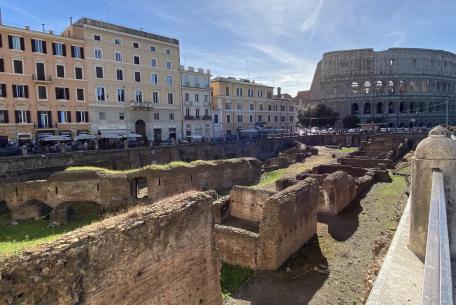
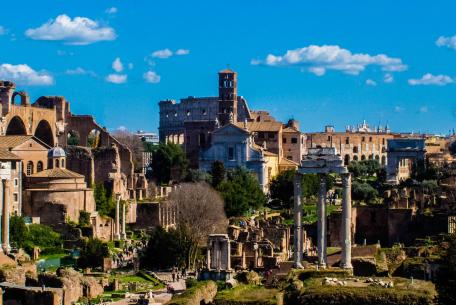
The Imperial Fora are a monumental architectural complex, formed by a series of buildings and monumental squares, the centre of the political activity of ancient Rome, built in a p
[...]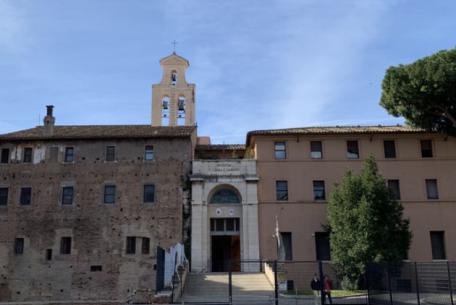
The Basilica was built in 6th century. A.D.
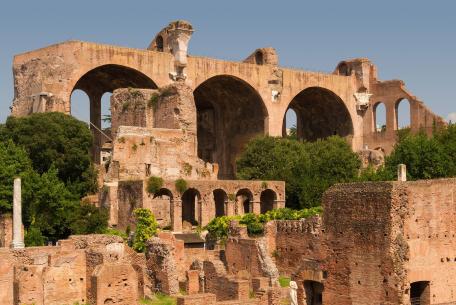
Those of you who have already been to the Capitoline Museums will certainly have admired the fr
[...]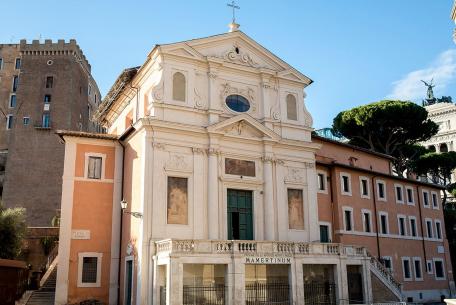
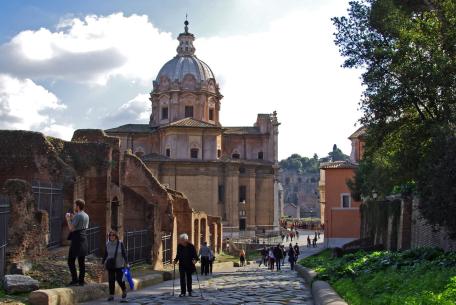
The church is now a masterpiece of the Roman Baroque style but its origins date back to the 7th century, when Pope Honorius I dedicated a sacred building to St Mar
[...]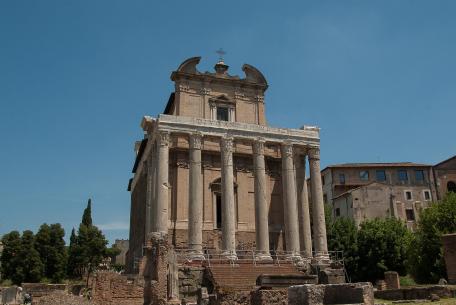
Dedicated to St Lawrence, the 3rd century deacon and martyr of Rome, the church dominates the Roman Forum and was created in the Middle Ages inside the cell of the temple that the
[...]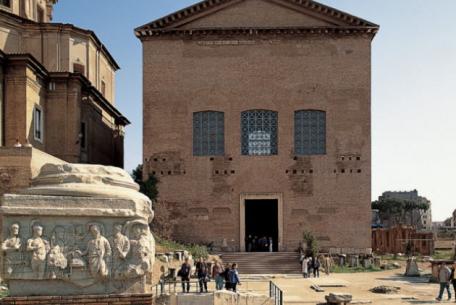
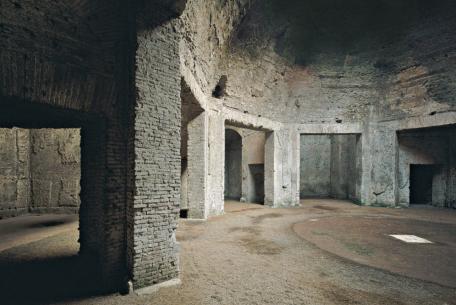
After the fire of 64 AD, which destroyed much of the center of Rome, Emperor Nero began the construction of a new residence, that for its splendor went down in history with the name of Domus Aurea.
[...]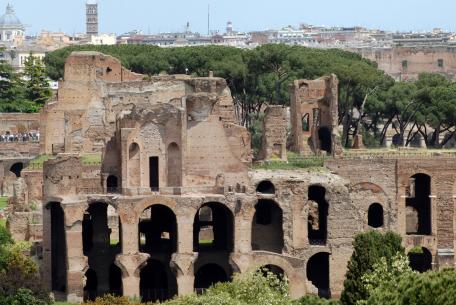
Formerly a swampy area, only from the end of the seventh century BC with the reclamation of the valley, the Roman Forum slowly began to become the centre of public life for over a
[...]
Probably the most famous monument in the world and a symbol of the greatness of Rome, the Flavian Amphitheater, better known as the Colosseum for the colossal bron
[...]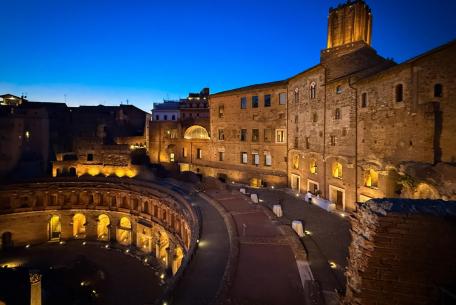
The Museum of the Imperial Fora, in the Trajan's Markets, is topographically and conceptually linked to the impressive urban system of the Imperial Fora: of Caesar
[...]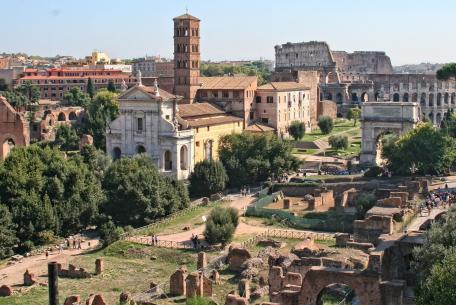
Parco Archeologico del Colosseo includes the extraordinary ancient complexes forming part of the central archaeological area, namely Colosseum, Roman Forum
[...]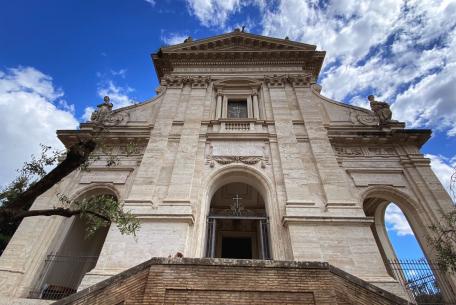
The church is dedicated to Santa Francesca Romana, a Benedictine nun and patron saint of drivers (whose festivity takes place on March 9), who became a saint in 1608 due to her eff
[...]We are in the heart of imperial Rome, where millenary vestiges are silent testimonies of the grandeur and splendour of the Eternal City. This area is crossed by the spectacular via dei Fori Imperiali, about 900 meters long, and represents Rome in the collective imagination. It attracts millions of tourists from all over the world, who want to admire some unmissable monuments of the city. It is a not-to-be-missed place once you arrive in the capital, on a pleasant sunny day, in the moonlight or in the rain, to take an original souvenir photo in the reflection of the puddles. Walking or cycling along the suggestive ruins is a ritual for the Romans - especially during the "ecological" weekends when the road is pedestrianized, and for those visiting Rome or returning there, it is an experience that gets "the soul used to feeling beauty", as Stendhal said.
The symbol of the Capital, the Flavian Amphitheatre, was built starting from 70 AD. by the emperor Titus Flavius Vespasian, on the area between the Palatine, Esquiline and Celio hills, previously occupied by the artificial lake of Nero's Domus Aurea. It is famous with the name of the Colosseum because of a colossal bronze statue with the features of the controversial emperor, placed nearby. Still today, it is the largest amphitheatre ever built by man. It was one of the favourite places of the Romans for entertainment. The building was dedicated to the munera gladiatoria, the games and fights between gladiators, who practised in the nearby Ludus Magnus, the largest of the gladiatorial gyms in Rome; the hunting to wild and exotic animals (venationes); the naumachia (naval combat) and executions. It is part of the Parco Archeologico del Colosseo with the Roman Forum and Palatine Hill and hosts temporary exhibitions and shows.
On the surrounding area stands the Palatine Hill, where according to legend, the history of Rome begins with the killing of Remus by his brother Romulus, the first king of the city. Here are preserved the remains of the city most ancient nucleus, dating back to the Iron Age. Between the 2nd and 1st centuries BC, it became the residential area of the Roman aristocracy, as evidenced by the remains of the elegant patrician houses. Later, it was the privileged site of numerous imperial palaces, such as the Domus Tiberiana, the Domus Transitoria, the Domus Aurea, the Domus Flavia.
On the Palatine are some splendid churches, built in the following centuries, such as the enchanting Santa Francesca Romana, San Teodoro, a Greek Orthodox church, the elegant San Sebastiano Martire, and San Bonaventura, one of the most popular for weddings.
The Roman Forum was the centre of public life for over a millennium. It was the commercial, civic and administrative seat of the ancient city. Over the centuries, political, religious and commercial buildings were built, followed by civil basilicas and temples, arches and monuments of the great emperors. The most impressive, in chronological order, is the Basilica on the Velia built in late antiquity by the emperor Maxentius, where, even today, prestigious cultural events take place.
After the 7th century, the area was buried and transformed into a pasture (Campo Vaccino), though some monuments were converted into Catholic buildings: Sant'Adriano (Curia Iulia); San Lorenzo de' Speziali in Miranda (formerly the Temple of Antonino and Faustina); Santi Cosma e Damiano (Temple of Romulus); Santa Maria Nova (one of the cells of the Temple of Venus and Rome). In the 16th century, the church of San Giuseppe dei Falegnami was erected on the ancient prison of the Tullianum, known as the Mamertine prison. In the following century, the church of Santi Luca e Martina was rebuilt on the remains of the Secretarium Senatus.
It is the end of the Republican period; Rome is the capital of an enormous empire, and the Roman Forum is insufficient for the administrative needs of the city. An expansion of the area begins with Julius Caesar, followed by the majestic Imperial Fora building erected over time by various emperors. The Forum of Augustus, the Forum of Nerva or Transitory, and the impressive Trajan's Forum, with the buildings housing warehouses, shops and offices, follow the Forum of Caesar. Inside the annexed Trajan's Markets is the Museo dei Fori Imperiali, the first museum of ancient architecture.
At the beginning of the 1930s, in the middle of the Fascist era, the archaeological area was divided to build Via dell’Impero, the current Via dei Fori Imperiali, an imposing straight line between Piazza Venezia and the Colosseum, intended for military parades.











































